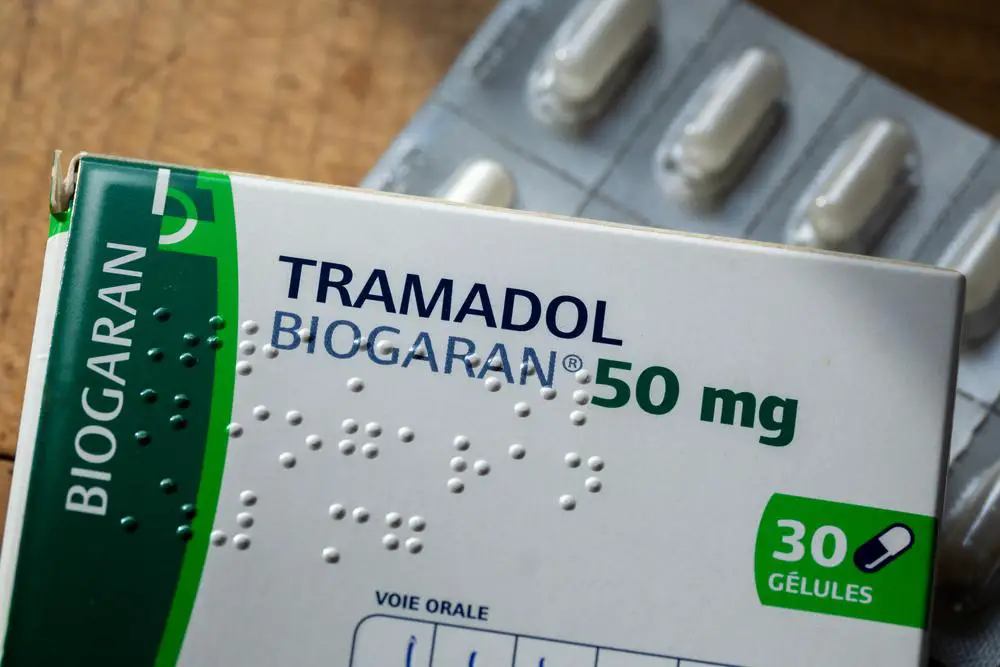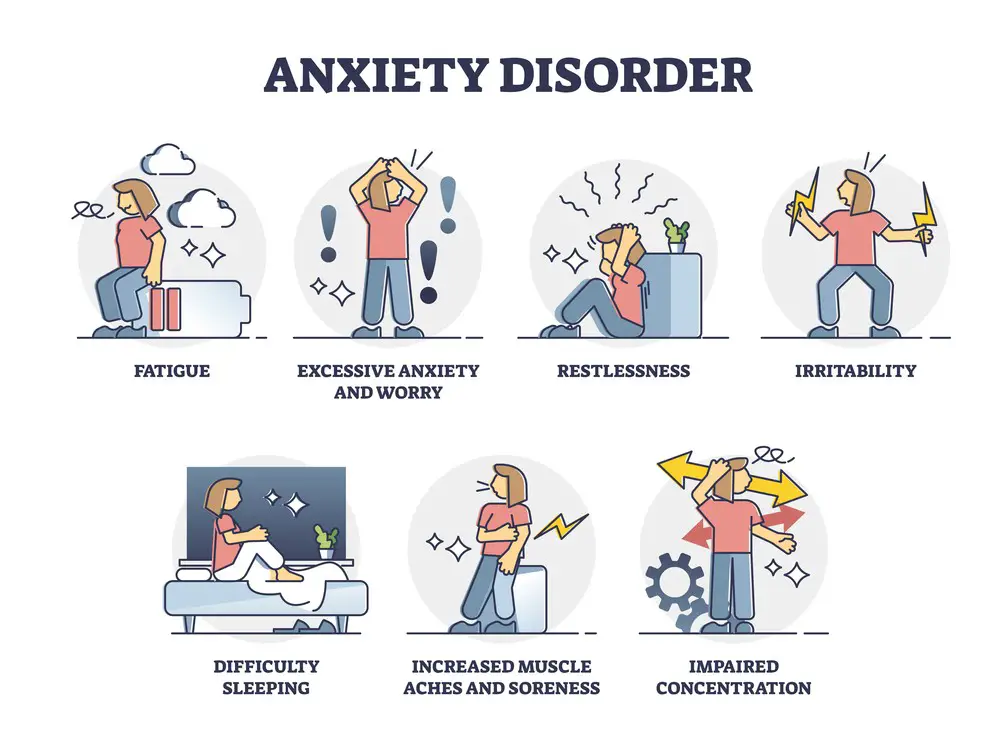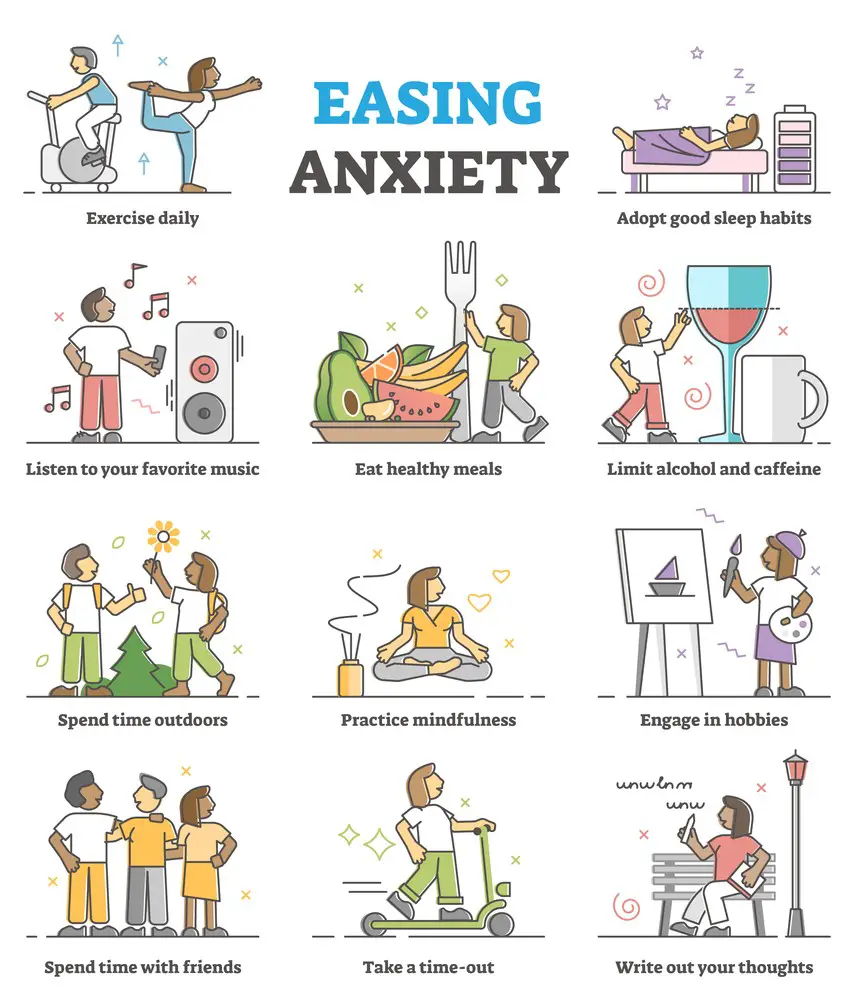As a BetterHelp affiliate, we receive compensation from BetterHelp if you purchase products or services through the links provided
Tramadol, commonly recognized for its pain-relieving abilities, is also sometimes prescribed for the management of anxiety. While not a first-line treatment for anxiety disorders, its use in some instances may be considered by healthcare providers. It’s essential to understand how tramadol works and the reasoning behind its use for anxiety beyond its primary indication for pain.
When considering tramadol for anxiety, it’s crucial to evaluate potential benefits against possible risks. Side effects can happen with any medication, and tramadol is no exception. Furthermore, your health history and medication regimen must be examined closely to ensure safety and minimize complications. Effective clinical management of anxiety often involves a comprehensive approach that may include medications like tramadol but also incorporates therapy and lifestyle changes.
Key Takeaways
- Tramadol may be used in some cases for anxiety management, though it is primarily a pain medication.
- It’s necessary to weigh the potential benefits of tramadol against the possible side effects and risks.
- A comprehensive approach to anxiety treatment typically includes a combination of medication, therapy, and lifestyle adjustments.
 Tramadol Overview
Tramadol Overview
In unraveling the complexities of tramadol, it’s essential to understand its legal classification, how it functions to relieve pain, its specific role in treating anxiety, and the forms in which it is available for use.
Classification and Drug Scheduling
Tramadol is a prescription medicine classified as an opioid analgesic. The FDA approves its use for managing moderate to severe pain. Tramadol is also a Schedule IV controlled substance, as designated by the DEA, indicating a potential for abuse and dependence but lower than Schedule II or III opioids.
- Key Takeaway: Tramadol is a regulated opioid, indicating its potential for abuse is recognized, albeit lower than many other opioids.
Mechanism of Action
Tramadol’s primary function is to alleviate pain. It achieves this by binding to the body’s mu-opioid receptors and blocking the reuptake of serotonin and norepinephrine, neurotransmitters involved in pain modulation. The dual action makes tramadol a unique analgesic among opioids.
- Key Takeaway: Tramadol’s distinctive way of reducing pain involves opioid receptor activity and neurotransmitter reuptake inhibition.
Tramadol and Anxiety: Efficacy and Use Cases
While tramadol’s primary indication is for pain relief, there are anecdotal reports of its off-label use for anxiety. However, its efficacy for treating anxiety has explicitly not been strongly established by clinical studies. Your doctor might consider alternative treatments proven to be more effective for anxiety disorders.
- Key Takeaway: Tramadol is not primarily prescribed for anxiety; you should consult your doctor for anxiety-specific treatment.
Available Forms and Dosages
Tramadol comes in various forms and dosages, accommodating immediate and extended pain relief needs. You might encounter it in immediate-release tablets, typically prescribed for short-term pain management, or in extended-release tablets and capsules, suited for chronic pain conditions. Dosages vary, with the FDA recommending that the physician determine the dosing to minimize risks.
- Immediate-release: Usually taken every 4-6 hours as needed.
- Extended-release: Designed for around-the-clock treatment of pain.
- Key Takeaway: Your tramadol prescription will specify the form and dosage, reflecting your specific pain management needs.
Indications and Patient Considerations
When considering tramadol for health concerns, it’s vital to understand its approved uses and patient factors, especially regarding anxiety.
Approved Indications
Tramadol is a prescription medication primarily indicated for the management of moderate to severe pain. It works on the central nervous system to relieve pain. As an opioid analgesic, its use is carefully regulated.
- Pain management: Indicated for both acute and chronic pain.
- Dosage: Adjusted based on severity of pain and patient response.
Off-label Use for Anxiety
Though not officially approved for anxiety, tramadol has been used off-label in some cases. This means that while regulatory agencies do not specifically sanction the medication for anxiety, some prescribers may deem it beneficial for certain patients based on their professional judgment.
- Caution: Off-label use should only be under close medical supervision.
Possible Benefits for Patients with Anxiety
Tramadol could potentially offer benefits for patients with anxiety due to its impact on neurotransmitters associated with mood regulation. These possible benefits, however, should be weighed against the risks.
- Impact on mood: May enhance serotonin and norepinephrine levels.
- Consideration: Benefits must be balanced with the risk of side effects.
Patient Selection Criteria
Selecting suitable patients for tramadol treatment involves assessing factors such as age, medical history, and other medications. Specific patient considerations include:
- Age: Older adults may have an increased risk of side effects.
- Pregnancy: Not typically recommended due to potential risks.
- Breastfeeding: Caution is advised as tramadol can pass into breast milk.
- Depression and anxiety: Evaluate the risk-to-benefit ratio in individuals suffering from these conditions.
- Pre-existing conditions: Careful consideration for patients with central nervous system conditions.
Key Takeaway: The decision to use tramadol, particularly for anxiety, should be made after a thorough evaluation of the individual’s health profile and with a clear understanding of the potential risks and benefits involved.
 Side Effects and Risks
Side Effects and Risks
While tramadol can help manage anxiety, you must be aware of potential side effects and risks. This medication can significantly affect your body, and understanding these effects is vital to your safety and well-being.
Common Side Effects
You might experience some common side effects while taking tramadol, though not everyone does:
- Nausea: Feeling queasy is a frequent reaction.
- Constipation: Your bowel movements could become less frequent.
- Headache: You may notice aches or pains in your head.
- Dizziness: A sense of instability is not uncommon.
- Sweating: You might find yourself sweating more than usual.
- Itching: An itching sensation without a rash can occur.
Key takeaway: If these common side effects become troublesome or don’t go away, it’s essential to consult with your doctor.
Serious Adverse Reactions
While less common, serious risks should be considered:
- Seizures: Taking tramadol may increase the risk of seizures, especially if you have a history of them.
- Serotonin Syndrome: This is a rare but potentially life-threatening condition that can happen when levels of serotonin, a neurotransmitter, become too high.
- Overdose: Symptoms of overdose can range from drowsiness to a life-threatening or fatal coma.
- Respiratory depression: Difficulty breathing is a serious risk, particularly at high doses.
- Death: In cases of overdose or combined with other depressants, there’s a fatal risk.
Key takeaway: Serious side effects warrant immediate medical attention. Always follow dosing instructions and your doctor’s advice to mitigate these risks.
Safety and Precautionary Measures
When considering tramadol for anxiety, it’s essential to understand the safety protocols and necessary precautions to minimize risks and ensure effective treatment.
Contraindications
- Allergies: If you’re allergic to tramadol or other opioids, steer clear of this medication.
- Pediatrics: Not recommended for children under 12 or post-operative pain in young ones under 18.
- Other Health Conditions: If you have breathing problems, a blockage in your gut, or are prone to seizures, talk to your doctor.
Key Takeaway: Know your health status to determine if tramadol is a safe option for you.
Drug Interactions and Concomitant Use with Alcohol
- Medication Clashes: Combining tramadol with certain antidepressants, MAO inhibitors, or sedatives can be dangerous.
- Alcohol: Mixing tramadol with alcohol increases the risk of severe side effects or overdose.
Key Takeaway: Always discuss your current medications with your doctor and avoid alcohol.
Warning Signs and Overdose Prevention
Be vigilant for signs like:
- Breathing Problems: Slow or irregular breathing can be a red flag.
- Confusion or Extreme Drowsiness: These could indicate too much tramadol in your system.
- Naloxone: Having this medication on hand can help reverse an overdose.
Key Takeaway: Be alert to the warning signs of overdose and have naloxone available.
Safe Disposal of Unused Medication
- Follow the FDA Guidelines: Dispose of unused tramadol promptly according to official instructions.
- DEA Take-Back Programs: Participate in DEA take-back events for safe medication disposal.
Key Takeaway: Dispose of tramadol properly to prevent misuse or accidental ingestion.
 Clinical Management of Anxiety
Clinical Management of Anxiety
Anxiety can be a challenging condition, but understanding the role tramadol may play in treatment and considering various alternatives is crucial for effective management.
Assessing the Effectiveness of Tramadol for Anxiety
Tramadol is primarily prescribed as a pain medication. However, due to its impact on neurotransmitters such as serotonin, some healthcare providers may explore its off-label use for anxiety. When it comes to tramadol, you should know:
- Dosage: It’s essential to adhere strictly to the dosage prescribed by your healthcare provider to mitigate potential side effects and withdrawal symptoms.
- Monitoring: Regular follow-ups are necessary to monitor the medication’s impact on your anxiety levels and overall health.
- Safety: Since tramadol is an opioid analgesic, caution is warranted due to potential dependency and withdrawal concerns.
Key Takeaway: Always consult your healthcare provider to tailor your prescription to your condition.
 Alternative Therapies and Medications
Alternative Therapies and Medications
While tramadol might not be the first-line medication for anxiety, numerous alternatives exist:
- Medications: Antidepressants, benzodiazepines, and beta-blockers are commonly prescribed and could be discussed with your doctor.
- Therapies: Cognitive-behavioral therapy (CBT) and other counseling strategies often prove beneficial in managing anxiety symptoms.
- Lifestyle Adjustments: Regular exercise, meditation, or yoga can significantly help reduce anxiety levels.
Key Takeaway: There are diverse treatment options for anxiety, and a discussion with your healthcare provider can help identify the most appropriate one for you.
Frequently Asked Questions
Exploring the ins and outs of tramadol for anxiety can be quite nuanced. These FAQs touch on the most crucial aspects of this topic, providing you with a clearer understanding.
What is the relationship between tramadol and mood alterations?
Tramadol is primarily an opioid pain medication, but it also has effects on mood because it impacts neurotransmitters involved in mood regulation, such as serotonin and norepinephrine. This trait may influence one’s mood, potentially leading to an elevation in some individuals.
Is it safe to use tramadol alongside other anxiety medications?
Caution is paramount when combining tramadol with other medications for anxiety due to the increased risk of side effects or potentially serious interactions. Always consult your healthcare provider before mixing medications, as they can offer personalized advice.
- Key takeaway: Consult with healthcare professionals before mixing tramadol with other anxiety treatments to ensure safety.
Are there any known effects of tramadol when used for treating anxiety in dogs?
Tramadol has been used to treat chronic pain in dogs and may indirectly affect anxiety due to its pain-relieving properties. However, its direct effects on canine anxiety aren’t well-established and should be discussed with a veterinarian.
What dosage of tramadol is commonly prescribed for alleviating symptoms of depression?
Tramadol dosages for depression are not standardized and can vary. This medication isn’t typically a first-line treatment for depression, and a healthcare provider should closely monitor any consideration of its use.
Can the use of tramadol lead to experiencing panic attacks?
While not common, there have been instances where tramadol use has been associated with an increase in anxiety or panic symptoms in some individuals. If you experience such symptoms, promptly discuss them with your doctor.
- Key takeaway: Be alert for any unusual increases in anxiety or panic when using tramadol and report these to your doctor.
How does a low dose of tramadol compare to traditional antidepressants in managing depression?
Low doses of tramadol may offer mood elevation in some cases, but it is not considered a conventional treatment for depression. Traditional antidepressants have more extensive research supporting their use and are typically preferred for long-term management.
- Key takeaway: Traditional antidepressants remain the well-researched go-to for managing depression, with tramadol as a less-explored alternative.
- How to Transform a Home’s Patio Space into a Relaxing Space - March 23, 2025
- 5 Strategies to Use a Cell Phone to Help Manage Your Stress - March 23, 2025
- 4 Ways to Use Measurements to Create a Relaxing Sleep Space - March 23, 2025
This site contains affiliate links to products. We will receive a commission for purchases made through these links.


 Tramadol Overview
Tramadol Overview Side Effects and Risks
Side Effects and Risks Clinical Management of Anxiety
Clinical Management of Anxiety Alternative Therapies and Medications
Alternative Therapies and Medications
